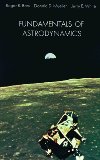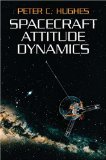Wikipedia dicit:
OSIRIS-REx (Origins, Spectral Interpretation, Resource Identification, Security, Regolith Explorer) is a NASA asteroid-study and sample-return mission. The mission’s primary goal is to obtain a sample of at least 60 g (2.1 oz) from 101955 Bennu, a carbonaceous near-Earth asteroid, and return the sample to Earth for a detailed analysis. The material returned is expected to enable scientists to learn more about the formation and evolution of the Solar System, its initial stages of planet formation, and the source of organic compounds that led to the formation of life on Earth.
OSIRIS-REx was launched on 8 September 2016, flew past Earth on 22 September 2017, and rendezvoused with Bennu on 3 December 2018. It spent the next several months analyzing the surface to find a suitable site from which to extract a sample. On 20 October 2020, OSIRIS-REx touched down on Bennu and successfully collected a sample. Though some of the sample escaped when the flap that should have closed the sampler head was jammed open by larger rocks, NASA is confident that they were able to retain between 400 g and over 1 kg of sample material, well in excess of the 60 g (2.1 oz) minimum target mass. OSIRIS-REx is expected to return with its sample to Earth on 24 September 2023 and subsequently start its new mission to study 99942 Apophis as OSIRIS-APEX (‘APophis EXplorer’), arriving at that asteroid in 2029.
Bennu was chosen as the target of study because it is a “time capsule” from the birth of the Solar System. Bennu has a very dark surface and is classified as a B-type asteroid, a sub-type of the carbonaceous C-type asteroids. Such asteroids are considered primitive, having undergone little geological change from their time of formation. In particular, Bennu was selected because of the availability of pristine carbonaceous material, a key element in organic molecules necessary for life as well as representative of matter from before the formation of Earth. Organic molecules, such as amino acids, have previously been found in meteorite and comet samples, indicating that some ingredients necessary for life can be naturally synthesized in outer space.
The cost of the mission is approximately US$800 million, not including the Atlas V launch vehicle, which is about US$183.5 million. It is the third planetary science mission selected in the New Frontiers program, after Juno and New Horizons. The principal investigator is Dante Lauretta from the University of Arizona. If successful, OSIRIS-REx will be the first United States spacecraft to return samples from an asteroid. The Japanese probe Hayabusa returned samples from 25143 Itokawa in 2010, and Hayabusa2 returned from 162173 Ryugu in December 2020. On 10 May 2021, OSIRIS-REx successfully completed its departure from Bennu and began its two-year return to Earth.
Video credit: Lockheed Martin









 Subscribe to blog posts using RSS
Subscribe to blog posts using RSS










